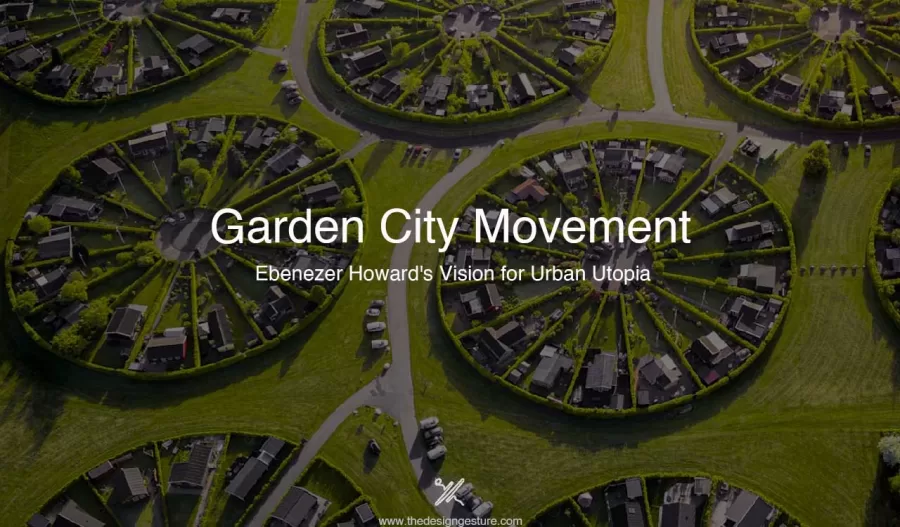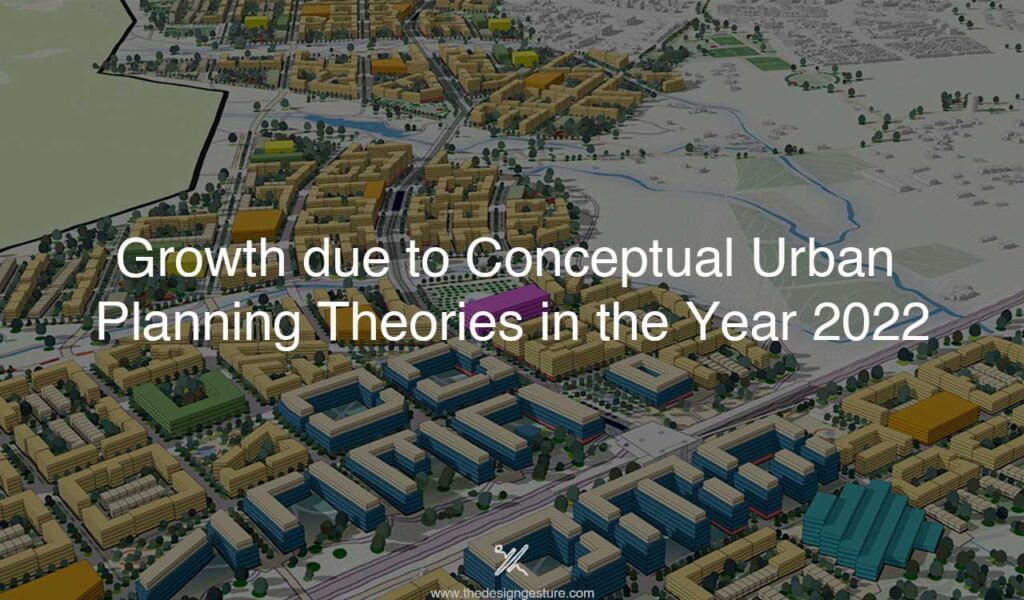Table of Contents
Introduction
An Englishman, Ebenezer Howard’s utopian urban planning idea served as the foundation for the garden city movement. The best features of both urban and rural life are accessible in garden cities. The Industrial Revolution gave rise to Howard’s beliefs, which were partly a response to the plight of London’s workers. Urban planning standards of today have been significantly influenced by the garden city movement.
History of the Garden City Movement
Firstly, the idea of the Garden City movement was presented in the year 1898 in the book,
To-morrow: A Peaceful Path to Real Reform, and in the year 1902 it was republished with the name, Garden Cities of To-morrow.
According to Howard, creating town/country cities with extremely particular guidelines might result in the best living conditions for people from all socioeconomic backgrounds. During the Industrial Revolution, the places became overcrowded due to sudden urbanization which led to a housing crisis for people of different socioeconomic backgrounds. However, his theories drew inspiration from earlier utopian writings that praised the idea of a strictly controlled working class residing in idealized communities governed by powerful governmental institutions.
However, religious and secular utopian communities both aimed to live their lives and build societies that came close to human perfection. Instead of reforming an existing social order, utopian organizations concentrated their efforts on the development of a new one that was perfected. This led to the basis of the Garden City movement.
Three Magnet
Urban slums, pollution, and the difficulty of visiting the countryside were some of the issues that prompted Howard to write during the Industrial Revolution. He spent a significant portion of his work arguing that cities, as they were then, could not last and would eventually have to be demolished. He was also aware of the financial issues faced by rural farmers, many of whom lived in poverty as a result of crop prices and weather conditions.
According to Howard in his book, “town” and “country” are like magnets that pull people to them for various, sometimes conflicting reasons. He listed the advantages and disadvantages of both, comparing how the town offers “social opportunity” in exchange for “closing out of nature” while the country delivers “beauty of nature” but a “lack of society.” According to Howard, neither the city nor the country was ideal.
Towns
The options for jobs and good earnings, as well as the social opportunities, amusements, and well-lit streets, are what draw people to “Town Magnet.” It offered solitude from crowds, was closed off from nature, and provided time away from work. But it did so at the expense of slums, expensive drainage, cloudy skies, and bad air. Town life has both positive and negative aspects.
Country
‘Country Magnet’s’ natural beauty, clean air, and healthfulness are its draws. It provided a meadow, inexpensive rents, pure air, and natural beauty but had low wages and inadequate drainage. The country is boring, lacks society, has low incomes, few amusements, and is generally in disrepair.
Town – Country
With the intention of combining the advantages of both, it gave the beauty of nature, social opportunity, easily accessible fields, inexpensive rent, good pay, and a field for enterprise. The ‘Town Country Magnet’ was offered as a town in the country with the amenities of natural beauty, fresh air, and healthfulness as part of its solution, which combined the benefits of town and country. Therefore, the benefits of both the town and the country are seeded to be free from each other’s drawbacks.
Principles of Garden Cities
- Cooperative land ownership ensures that the community, not just private individuals, benefits from an increase in land values.
- Large-scale planning: positive economic and social effects.
- Construction of compact communities with a balanced agricultural and industrial economy
- Using a nearby green belt to create a recreational farming area
- Urban Decentralisation
Designing of Garden Cities
Howard made the decision to design highly structured, meticulously planned communities in order to offer the best living conditions for a variety of people. Because British landowners were free to use their property any way they pleased during Howard’s time, he planned to buy sizable tracts of land from aristocratic landowners and build garden cities on which 32,000 people would live in separate dwellings spread across 6,000 acres.
The following would be found in the garden cities, beginning in the center of the circle:
- A large public garden among governmental structures like the town hall, lecture halls, theatres, and a hospital;
- A massive passageway known as the “crystal palace,” where locals could peruse a covered market and take in a “winter garden;
- 5,500 construction sites for single-family homes (some with “cooperative kitchens” and shared gardens);
- Schools, churches, playgrounds, factories, farms, warehouses, and connection to train.
In addition to planning the physical layout of his garden cities, Howard also developed a complex strategy for financing its development, maintaining its infrastructure, helping those in need, and ensuring the well-being of its inhabitants. In its ideal state, Garden City would develop into a network of smaller towns centered on a larger one.
Components of Garden Cities
Planned Dispersal
The planned movement of businesses and residents to communities that are large enough to offer the services, range of jobs, and degree of culture that a representative sample of modern society needs.
Limited size of Town
Limiting town growth will allow residents to live close to places of employment, retail establishments, community centers, and other residents, as well as open spaces.
Amenities
The internal structure of communities should be open enough to allow for individual gardens, enough room for schools and other essential facilities, as well as lovely parks and parkways.
Relationship between town and country
The town area should be established, with a sizable region around it set aside permanently for agriculture. This would guarantee that there will be a market and cultural hub nearby for farmers while giving town residents access to a rural setting.
Controlled planning
Pre-planning of the entire town’s infrastructure, including the road system and functional zoning; fixation of maximum densities; regulation of building quality and design while allowing for individual variability; skillful planting and landscape garden design.
Neighbourhoods
The town will be divided into wards, each of which will function somewhat as a social and developmental unit. Letchworth Garden City and Welwyn Garden City, both in Hertfordshire, England, are two garden cities that were constructed utilizing Howard’s garden city movement concept.




